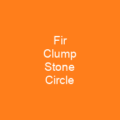Until 1947, compulsory figures made up 60 percent of the total score at most competitions around the world. The International Skating Union voted to discontinue them as a part of competitions in 1990. The World Figure Sport Society has conducted festivals and competitions of compulsory figures, endorsed by the Ice Skating Institute, since 2015.
About Compulsory figures in brief

In 1869, Henry Vandervell and T. Maxwell Witham from the London Skating Club wrote System of Figure Skating, which described variations of the threeturn, the bracket, the rockers, the Mohawk and the Q. The circle is the basis of all figure skating; other elements in compulsory figures include curves, change of foot and change of edge, and turns. The Edinburgh Skating. Club, one of the oldest skating clubs in the world, described combined figures and those done by multiple skaters; interlocking figure eights were the most. important. By the 1850s, the mostimportant figures were developed, and formed the basis for figure skating at the time. Jean Garcin, a member of an elite group of skaters in France, wrote a book about figure skating in 1813 that included descriptions and illustrations of over 30 figures, including a series of circle-eight figures that skaters still use today. The Art of Skating was written by Robert Jones in 1772 and described five advanced figures, three of which were illustrated with large color plates, which emphasized correct technique, were the accepted and basic repertoire of figures in 18th century England. The London Sk skating Club, founded in 1830 in London, also required proficiency tests for members and pioneered combined skating, which contributed to the evolution of school figures.
You want to know more about Compulsory figures?
This page is based on the article Compulsory figures published in Wikipedia (as of Dec. 06, 2020) and was automatically summarized using artificial intelligence.







